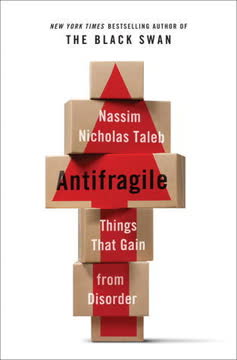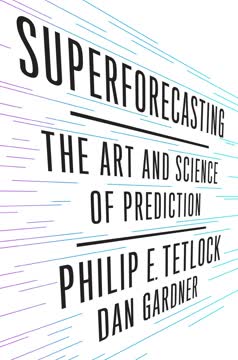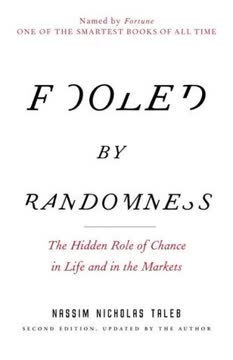Key Takeaways
1. Our genes shape behavior, but we can outsmart them
Consider this book an owner's manual for your brain.
Evolutionary legacy. Our genes, shaped by millions of years of evolution, influence our behavior in ways that often conflict with modern life. These "mean genes" push us towards behaviors that were advantageous in our ancestral environment but may be harmful today. For example, our strong cravings for fatty and sugary foods, which were rare and valuable in the past, now contribute to obesity epidemics.
Outsmarting our instincts. Understanding our genetic predispositions allows us to develop strategies to overcome them. By recognizing the evolutionary roots of our impulses, we can create environments and habits that work with our nature rather than against it. This might involve:
- Removing temptations from our immediate environment
- Creating systems that make good choices easier
- Leveraging our social instincts to reinforce positive behaviors
2. Saving money requires tricking our ancient instincts
Evolution has produced a world of accomplished savers; humans, like most animals, simply save in the currency of body fat.
Ancient instincts in modern finance. Our ancestors lived in a world where resources were scarce and couldn't be stored long-term. This led to a "consume now" instinct that worked well for survival then but causes financial problems today. We're not naturally inclined to save money because our brains don't recognize it as a storable resource.
Strategies for saving. To overcome these instincts, we need to make saving automatic and less visible:
- Set up automatic transfers to savings accounts
- Use apps that round up purchases and save the difference
- Keep savings in accounts that are harder to access
- Frame saving as "spending on your future self"
These methods work by either hiding money from our impulsive selves or by tricking our brains into treating savings more like immediate consumption.
3. Body fat is an evolutionary savings account
If you are a man, look down at your waist and grab the flesh that covers your stomach. If you are a woman, look at your thighs and buttocks. What do you see?
Fat as stored energy. From an evolutionary perspective, body fat isn't just unwanted weight – it's stored energy that helped our ancestors survive periods of food scarcity. This explains why losing weight is so difficult; our bodies are designed to hold onto this "savings account" for survival.
Modern implications. Understanding this evolutionary drive can help us approach weight management more effectively:
- Recognize that rapid weight loss triggers survival instincts
- Focus on gradual, sustainable changes in diet and exercise
- Create environments where healthier choices are easier
- Use social support to reinforce new habits, as our ancestors lived in groups
Remember that our bodies aren't trying to sabotage us – they're following ancient programming that needs to be gently redirected in our modern food environment.
4. Drugs hijack our brain's natural reward systems
Drugs hijack and short-circuit this evolutionary reward system.
Natural rewards hijacked. Our brains have evolved complex reward systems to encourage behaviors that promoted survival and reproduction. Drugs of abuse target these same systems, providing intense stimulation that can overwhelm our natural rewards. This explains why addictions can be so powerful and difficult to overcome.
Understanding addiction. Recognizing the biological basis of addiction can lead to more effective treatments and less stigma:
- Addiction involves changes in brain chemistry and structure
- Genetic factors influence susceptibility to addiction
- Recovery often requires addressing both biological and psychological factors
Strategies for managing addictive tendencies:
- Understand your personal risk factors
- Create environments that minimize exposure to triggers
- Develop alternative sources of reward and pleasure
- Seek professional help when needed, as addiction often requires medical intervention
5. We're built to take risks, but often miscalculate odds
From a gene's perspective, even a minor nuisance like death needn't be an impediment to looking out for your relatives.
Evolutionary risk-taking. Our ancestors faced a world full of dangers, where taking calculated risks could mean the difference between starvation and survival. This led to a genetic predisposition for risk-taking behaviors, which can be both beneficial and problematic in modern contexts.
Miscalculating modern risks. While we're naturally inclined to take risks, we're not always good at assessing them in our current environment:
- We overestimate dramatic but rare risks (e.g., terrorism)
- We underestimate common but less sensational risks (e.g., heart disease)
- We're particularly bad at assessing very small probabilities (e.g., lottery odds)
To make better decisions:
- Seek out accurate statistical information
- Be aware of cognitive biases that affect risk perception
- Use decision-making tools to evaluate risks more objectively
- Consider long-term consequences, not just immediate thrills
6. Happiness is relative and adapts to circumstances
We are left with two puzzles. Why do people derive pleasure from taking risks? And why are we so bad at calculating the odds for those risks?
Hedonic adaptation. Our happiness levels tend to return to a baseline after both positive and negative life events. This "hedonic treadmill" explains why lottery winners aren't permanently happier and why people can adapt to difficult circumstances.
Strategies for lasting happiness:
- Focus on experiences rather than material possessions
- Cultivate gratitude and mindfulness
- Invest in relationships and community
- Set meaningful goals and pursue personal growth
- Create variety and novelty in your life to slow adaptation
Remember that happiness is often found in the pursuit of goals rather than their achievement. By understanding our adaptive nature, we can create lifestyles that continually engage our capacity for joy and satisfaction.
7. Beauty preferences have biological roots
Beauty is as much in the gene of the beholder as the eye.
Universal beauty standards. While cultural factors influence beauty ideals, there are surprisingly consistent preferences across cultures. These commonalities suggest a biological basis for our perception of beauty, often linked to indicators of health and fertility.
Key biological beauty factors:
- Symmetry: Indicates developmental stability
- Clear skin: Signals health and youth
- Body proportions: Often linked to fertility (e.g., waist-to-hip ratio)
- Facial features: Certain ratios are universally appealing
Implications:
- Understanding biological beauty cues can reduce insecurity about arbitrary standards
- Recognizing the evolutionary basis doesn't mean we must be slaves to these preferences
- Focus on overall health and well-being rather than chasing specific ideals
- Remember that personality, confidence, and other factors also significantly influence attraction
8. Infidelity has deep evolutionary origins
Infidelity is an attempt, often subconscious, by one side to improve his or her deal in the marriage exchange.
Evolutionary roots of cheating. From a biological perspective, infidelity can be seen as a strategy to maximize genetic success. Males may seek additional mating opportunities, while females might seek better genes or more resources for their offspring.
Modern implications:
- Understanding these drives doesn't justify infidelity but can help couples address underlying issues
- Open communication about needs and expectations is crucial
- Creating a strong partnership that meets both emotional and practical needs can reduce temptation
- Recognize that commitment requires ongoing effort and choice
Strategies for maintaining fidelity:
- Cultivate emotional intimacy and shared experiences
- Address relationship issues promptly
- Set clear boundaries with others
- Focus on the long-term benefits of a stable partnership
9. Family bonds are powerful but imperfect
Blood is thicker than water.
Evolutionary basis of kinship. We're genetically predisposed to favor our relatives because they share our genes. This explains the strength of family bonds and why we often make sacrifices for family members.
Limitations of family altruism:
- Conflict can arise when genetic interests don't align perfectly (e.g., parent-child conflicts)
- Step-families may face additional challenges due to lack of genetic relatedness
- Extreme self-sacrifice for relatives is rare outside of parent-child relationships
Balancing family and individual needs:
- Recognize the biological basis of family bonds without being constrained by them
- Cultivate chosen families and strong friendships
- Address family conflicts openly, recognizing both shared and divergent interests
- Create family cultures that balance individual autonomy with group cohesion
10. Racial differences are superficial genetically
If an asteroid strikes the earth and kills everyone except for the people now living in Africa, 93% of all the human genetic diversity would still be present.
Genetic similarity across races. Despite visible differences, humans are remarkably similar genetically. The traits we associate with race (like skin color) involve a tiny fraction of our overall genetic makeup.
Key points about human genetic diversity:
- More genetic variation exists within racial groups than between them
- Many traits vary gradually across geographic regions, making clear racial distinctions arbitrary
- Racial categories are social constructs with limited biological basis
Implications:
- Challenge assumptions about racial differences in abilities or behaviors
- Focus on individual variation rather than group stereotypes
- Recognize the role of culture, environment, and personal experience in shaping human diversity
- Promote policies and practices that acknowledge our shared humanity
11. Cooperation emerges even between enemies
Cooperation takes time to develop, and the fear of punishment can succeed as a deterrent only if the offender will be punished.
Evolutionary roots of cooperation. Humans have evolved to be highly cooperative, even with non-relatives, because working together often provided survival advantages. This capacity for cooperation can emerge even in hostile situations.
Keys to fostering cooperation:
- Establish clear rules and expectations
- Create systems for fair punishment of rule-breakers
- Allow for forgiveness and the rebuilding of trust
- Recognize mutual benefits of cooperation
Applying cooperation principles:
- In personal relationships, maintain a balance of give-and-take
- In business, create win-win scenarios that align interests
- In conflicts, look for shared goals and gradual trust-building measures
- In society, build institutions that promote fairness and accountability
By understanding our evolutionary predisposition for both conflict and cooperation, we can create environments that bring out the best in human nature.
Last updated:
FAQ
What's "Mean Genes: From Sex to Money to Food Taming Our Primal Instincts" about?
- Overview: "Mean Genes" by Terry Burnham and Jay Phelan explores how our genetic makeup influences our behaviors and desires, often leading us to make choices that are not in our best interest.
- Focus Areas: The book covers a range of topics including sex, money, food, drugs, risk-taking, and relationships, examining how our primal instincts drive these behaviors.
- Purpose: It aims to provide readers with insights into why we struggle with self-control and offers strategies to manage these instincts effectively.
- Approach: The authors use a combination of scientific research, evolutionary biology, and personal anecdotes to explain complex concepts in an accessible manner.
Why should I read "Mean Genes"?
- Self-Understanding: The book offers a deep dive into understanding why we behave the way we do, providing a "manual" for our brains.
- Practical Advice: It provides actionable strategies to help manage and tame our primal instincts, making it a practical guide for improving self-control.
- Scientific Insight: The book is grounded in evolutionary biology, offering scientific explanations for everyday behaviors and challenges.
- Engaging Style: With a mix of humor, personal stories, and scientific data, the book is both informative and entertaining.
What are the key takeaways of "Mean Genes"?
- Genetic Influence: Our genes play a significant role in shaping our desires and behaviors, often leading us to make irrational choices.
- Self-Control Strategies: Understanding our genetic predispositions can help us develop strategies to manage our instincts and improve self-control.
- Evolutionary Perspective: Many of our modern struggles, such as overeating and addiction, can be traced back to survival mechanisms from our evolutionary past.
- Behavioral Change: Small, incremental changes in behavior can lead to significant improvements in managing our primal instincts.
How do Burnham and Phelan suggest we manage our primal instincts?
- Awareness: The first step is understanding that our instincts are deeply rooted in our genes and recognizing when they are influencing our behavior.
- Incremental Change: The authors advocate for making small, manageable changes rather than attempting drastic overhauls.
- Environmental Control: Altering our environment to reduce temptation can be more effective than relying solely on willpower.
- Technological Aids: Utilizing modern technology, such as food substitutes or financial tools, can help mitigate the effects of our instincts.
What are the best quotes from "Mean Genes" and what do they mean?
- "Our toughest battles are with ourselves." This quote encapsulates the book's central theme that self-control is a constant struggle against our genetic programming.
- "Like it or not, we are each engaged in a battle against our own set of mean genes." This highlights the idea that our genes are not always aligned with our best interests.
- "The twig of human nature is indeed bent from the start." This suggests that our natural inclinations are often at odds with societal expectations and personal goals.
- "We are not lumbering robots doomed to carry out our genetic programming." This emphasizes the potential for change and self-improvement despite our genetic predispositions.
How does "Mean Genes" explain the role of genetics in financial behavior?
- Evolutionary Background: The book explains that our ancestors lived in environments where immediate consumption was necessary for survival, influencing our modern spending habits.
- Instinctual Spending: Our genetic predisposition to consume rather than save is a survival mechanism that is maladaptive in today's financial world.
- Practical Solutions: The authors suggest strategies like hiding money from ourselves and using automatic savings plans to counteract our instinctual spending habits.
- Cultural Comparisons: The book contrasts different cultural approaches to saving and spending, highlighting the flexibility of these behaviors.
What insights does "Mean Genes" offer about dieting and weight control?
- Thrifty Genes: Our genes are programmed to store fat as a survival mechanism, making weight loss challenging in a world of abundance.
- Set Point Theory: The book discusses the concept of a "set point" for weight, where the body resists changes to its established weight.
- Behavioral Strategies: The authors recommend focusing on the type of calories consumed and keeping detailed records of eating habits to manage weight effectively.
- Technological Interventions: They also explore the potential of food substitutes and pharmaceuticals to aid in weight control.
How does "Mean Genes" address addiction and substance abuse?
- Pleasure Pathways: The book explains how drugs hijack the brain's natural reward systems, making them highly addictive.
- Genetic Predisposition: Some individuals have genetic variations that make them more susceptible to addiction.
- Willpower Limitations: The authors argue that willpower alone is often insufficient to overcome addiction, advocating for technological and medical interventions.
- Preventive Measures: They suggest that understanding one's genetic risk can help in making informed choices about substance use.
What does "Mean Genes" say about risk-taking behavior?
- Genetic Thrill-Seeking: The book posits that some people have a genetic predisposition to seek out risky activities for the dopamine rush they provide.
- Evolutionary Advantage: Risk-taking may have been advantageous for our ancestors in exploring new territories and securing resources.
- Modern Implications: In today's world, this can manifest in gambling, extreme sports, and other high-risk behaviors.
- Managing Risks: The authors suggest finding safer outlets for thrill-seeking, such as roller-coasters or video games, to satisfy these instincts.
How does "Mean Genes" explore the concept of beauty and attraction?
- Biological Basis: The book argues that beauty standards are rooted in biological signals of health and fertility, such as symmetry and clear skin.
- Cultural Universality: Despite cultural variations, certain aspects of beauty are universally recognized, indicating a genetic basis.
- Mate Selection: The authors discuss how these standards influence mate selection and reproductive success.
- Practical Implications: Understanding these instincts can help individuals navigate relationships and societal expectations.
What does "Mean Genes" reveal about gender roles and relationships?
- Biological Differences: The book explores how genetic and hormonal differences influence traditional gender roles and behaviors.
- Evolutionary Context: Many gender-specific behaviors have evolutionary roots, such as male risk-taking and female mate selection criteria.
- Cultural Influences: While acknowledging cultural impacts, the authors emphasize the underlying biological factors that shape gender dynamics.
- Relationship Strategies: They offer insights into how understanding these differences can improve communication and satisfaction in relationships.
How can "Mean Genes" help improve personal relationships?
- Understanding Instincts: Recognizing the genetic basis for certain behaviors can lead to more empathy and better communication.
- Managing Expectations: The book suggests setting realistic expectations based on an understanding of human nature.
- Strengthening Bonds: It offers practical advice for maintaining strong relationships, such as regular gift-giving and shared activities.
- Conflict Resolution: By understanding the genetic roots of conflict, individuals can develop more effective strategies for resolving disputes.
Review Summary
Mean Genes explores how evolutionary biology influences human behavior, offering insights into why we struggle with self-control, overeating, and other impulses. Readers appreciate its accessible style and scientific approach to self-help, though some find the content repetitive or outdated. The book explains how behaviors that were once advantageous for survival may now be detrimental, providing strategies to overcome genetic predispositions. While some praise its entertaining and informative nature, others critique its simplistic solutions and lack of depth in certain areas.
Similar Books










Download PDF
Download EPUB
.epub digital book format is ideal for reading ebooks on phones, tablets, and e-readers.




